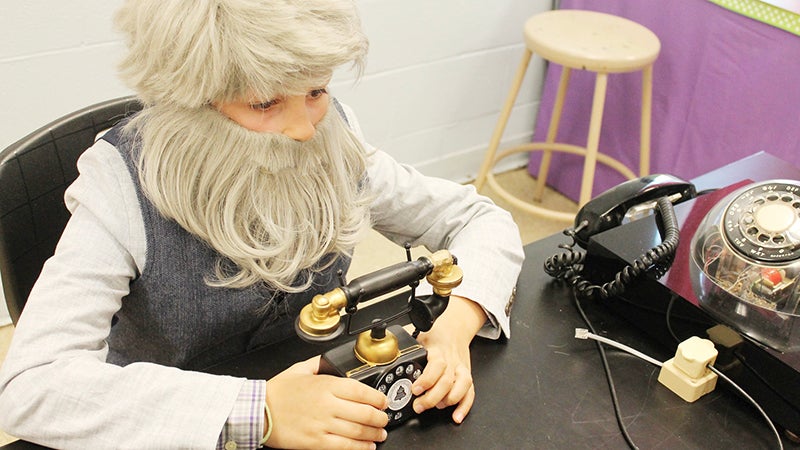LaGrange Academy students learn about history for inaugural living wax museum
Published 9:28 am Tuesday, March 26, 2024
|
Getting your Trinity Audio player ready...
|
LaGrange Academy recently held its inaugural Living Wax Museum event. The project helped fourth and fifth graders learn about history by performing as people throughout U.S. history and delivering speeches the kids wrote themselves.
From Cy Young and Albert Einstein to Ruby Bridges and Amelia Earhart, a total of 38 students performed as individuals who helped shape America as we know it.
The project was led by LaGrange Academy theater teacher Savanna Hunt and was months in the making.
In February, the students selected the person they would perform as with the only restriction being that they could explain why they were significant to American history, and they aren’t still alive.
“We didn’t limit them to just government and war history. We had athletes who had historic records. We had people in Hollywood. We had Elvis Presley, we had scientists, inventors and different categories. If they could defend why this person was significant to American history, then we let them be that person,” Hunt said.
The students worked on the project in theater class as well as their homeroom classes and during their library class time to use books from the library or internet sources to research things about their person and what made them significant.
After doing their research, the kids wrote a 30 to 60-second monologue, which after several drafts and revisions, they memorized and performed in costume as their chosen individual.
“That process was about four weeks of the research and writing process, and they had about two and a half weeks to get it memorized,” Hunt said. “…Part of that process was also finding their own costume. We talked about costumes through history and how essentially the further back in time he went, the more layers people wore and specifics like women would not have worn pants in the 1800s and how to make the choices relevant to their costume decisions.” They all did a great job and found things that fit the time period and made them really specific to their characters.”
Leading up to the performance, students made posters showing all the research they had done, which were displayed on the night of the event.
During the performance, students performing as wax statues were set up throughout the school with hallways and classrooms serving as wings of the museum. They had wings based on different categories such as scientists, authors and journalists, athletes, the Civil Rights era, the Revolutionary War, the Civil War, astronauts, pilots, and more.
Attendees were given 10 tokens, which they could turn in throughout the “wax museum” to get students to perform their speech.
“They would drop a token in the bucket, and the student would unfreeze from whatever pose they had chosen to be in character with. They would deliver their monologue and then they would go and freeze again until another token was dropped. Once people ran out of tokens, they could go into our token restock room, and they had to give a teacher a fact they had learned to get more tokens. For every fact, they could get they got two more tokens.”
“It lasted an hour and a half, and we wound up having to ask people to leave, which was not something I anticipated, but it was amazing. We easily had over 200 people there,” Hunt said.
The idea where attendees would earn additional tokens by remembering facts went a lot better than Hunt expected, she said.
“It was something that really made the kids excited. They were really nervous at first and asked how many times do you think we’re going to have to do it? I was like, at least 10,” Hunt said. “I’ve tallied them all, and the lowest number did it 25 times but one student did it 70 times.”
Some of them ended up reciting their speeches an extreme amount of times by the end of the night, but they wanted to go on forever, Hunt said.
“It went really well, and I was extremely surprised at the outcome. They can be proud of their hard work and people got to see everything that they put into it,” Hunt said.
Hunt said they hope to make the event an annual tradition for fourth and fifth graders. The current fourth graders will get to participate again and third graders who become fourth graders will get to do it for the first time.



